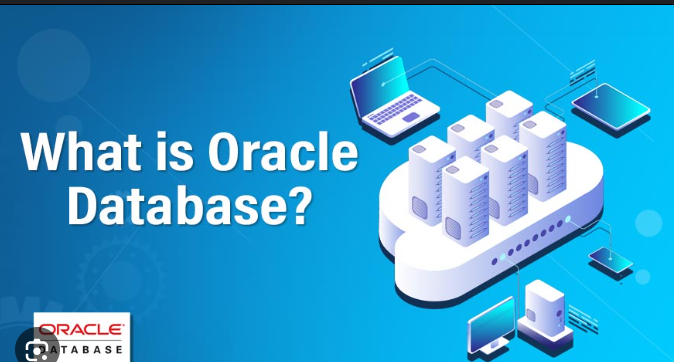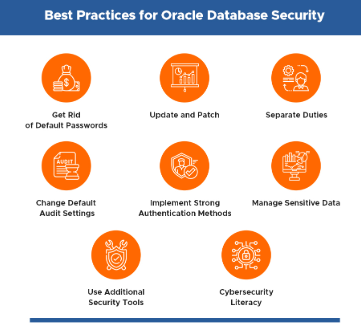In-Depth Blog: Understanding Oracle Database and Its Architecture

Oracle Database and Its Architecture 2024
WHAT IS ORALE DATABSE?

http://What is an Oracle Database?
Oracle Database, developed by Oracle Corporation, is a highly scalable and efficient relational database management system (RDBMS). It is designed to handle a wide range of data management tasks, from simple operations to complex enterprise-level applications. Its ability to manage vast amounts of data with reliability and robustness makes it the backbone of many business applications worldwide.
Key Features of Oracle Database
Multi-Tenancy with Oracle Multitenant:
- Oracle Database supports a multi-tenant architecture that allows for the consolidation of multiple databases (pluggable databases, PDBs) into a single container database (CDB). This architecture simplifies database management, reduces costs, and improves resource utilization.
High Performance and Scalability:
- Oracle Database ensures high performance through features like table partitioning, parallel query execution, and in-memory computing. Scalability is further enhanced with Oracle Real Application Clusters (RAC), allowing the database to span across multiple servers for load balancing and fault tolerance.
Robust Data Security:
- Oracle Database offers robust security features, including Transparent Data Encryption (TDE), Database Vault, and Advanced Security Options (ASO) to protect sensitive data. Access control, auditing, and data masking provide layers of protection against unauthorized access.
Data Recovery and High Availability:
- With Oracle Data Guard and Oracle Active Data Guard, databases can be configured for high availability and disaster recovery. Oracle Flashback technology enables point-in-time recovery to undo human errors and restore data to its previous state without complex recovery procedures.
Advanced Analytics and Machine Learning Integration:
- Oracle Database includes built-in machine learning algorithms and supports data analytics directly within the database, allowing for advanced data processing and predictive analytics without the need for external tools.
OR
- High Availability: Oracle Database ensures minimal downtime and supports real-time data access through features like Oracle Real Application Clusters (RAC) and Data Guard.
- Scalability: Oracle can scale vertically (by adding more resources to the same machine) and horizontally (by adding more machines to share the load).
- Security: Oracle provides extensive security features like encryption, role-based access, and auditing to protect data.
- Performance Optimization: Built-in tools and features like indexing, partitioning, and caching improve query performance and data retrieval.
Detailed Explanation of Oracle Database Architecture
The architecture of Oracle Database is divided into two main components: the Oracle Instance and the Oracle Database.
1. Oracle Instance
The Oracle instance is the combination of memory structures and background processes that interact with the database files.
- Memory Structures:
- System Global Area (SGA): A shared memory area that contains data and control information for the database instance. It includes:
- Database Buffer Cache: Temporary storage of data blocks read from the data files. It helps in reducing disk I/O by caching frequently accessed data.
- Redo Log Buffer: Stores redo entries that record changes made to the database. These entries are used during recovery operations.
- Shared Pool: Holds SQL execution plans, parsed SQL, PL/SQL code, and data dictionary information.
- Large Pool: Optional area for tasks like backup and recovery operations or session memory for shared server processes.
- Java Pool: Used for session-specific Java code and execution.
- Streams Pool: Used for Oracle Streams operations.
- Program Global Area (PGA):
- This is a private memory region for server processes. It contains data and control information for a single process. Examples include sorting information, session variables, and hash tables used in joins
- Background Processes:
- DBWn (Database Writer): Writes modified data from the buffer cache to the data files, ensuring data persistence.
- LGWR (Log Writer): Transfers redo log entries from the redo log buffer to the redo log files.
- CKPT (Checkpoint Process): Ensures that data consistency is maintained by signaling DBWn to write modified data to disk and updating the control file.
- SMON (System Monitor): Handles instance recovery by applying changes recorded in redo logs.
- PMON (Process Monitor): Cleans up processes that have failed and releases locks and resources held by them.
- ARCn (Archiver): Copies online redo log files to an archive location for long-term storage, aiding in media recovery.
2. Oracle Database (Physical Structure)
The physical storage layer consists of the following types of files:
- Data Files: Contain the actual user and system data. Each tablespace is associated with one or more data files.
- Redo Log Files: Capture all changes made to the database and play a crucial role in data recovery.
- Control Files: Contain essential metadata about the database structure and are crucial for database startup.
- Parameter Files (PFILE/SPFILE): Store the configuration parameters used to start the database instance.
- Archived Redo Logs: Copies of redo log files, essential for point-in-time recovery and supporting disaster recovery solutions like Oracle Data Guard.
3. Oracle Database (Logical Structure)
The logical storage layer is built on top of the physical storage, providing a way to organize data efficiently:
- Tablespaces:
- Logical storage units that group data files. Common types include SYSTEM, SYSAUX, TEMP, UNDO, and user-created tablespaces.
- Segments:
- Logical storage units within a tablespace, such as table segments, index segments, and undo segments.
- Extents:
- Units of storage that make up a segment. An extent is a set of contiguous data blocks.
- Data Blocks:
- The smallest unit of I/O within a database. The size of data blocks can vary depending on the database configuration.
Working with Oracle Database: Practical Code Examples
Below are practical code snippets for working with Oracle Database. These examples demonstrate key administrative tasks.
Example 1: Creating a New Tablespace
<pre>
<code>
CREATE TABLESPACE user_data
DATAFILE 'user_data01.dbf' SIZE 500M
AUTOEXTEND ON NEXT 50M MAXSIZE UNLIMITED
LOGGING
EXTENT MANAGEMENT LOCAL AUTOALLOCATE
SEGMENT SPACE MANAGEMENT AUTO;
</code>
</pre>Example 2: Creating a User and Assigning Privileges
<pre>
<code>
CREATE USER john_doe IDENTIFIED BY password123
DEFAULT TABLESPACE user_data
QUOTA 100M ON user_data;
GRANT CONNECT, RESOURCE TO john_doe;
</code>
</pre>Example 3: Backing Up a Tablespace Using RMAN
<pre>
<code>
RMAN> BACKUP TABLESPACE user_data;
</code>
</pre>Example 4: Checking Instance Status
<pre>
<code>
SELECT INSTANCE_NAME, STATUS FROM V$INSTANCE;
</code>
</pre>Advanced Concepts in Oracle Database Architecture

Oracle RAC (Real Application Clusters):
- Provides high availability and scalability by allowing multiple instances to access a shared database. This reduces the risk of database downtime and ensures continuous service.
Oracle Data Guard:
- Maintains a synchronized standby database to facilitate disaster recovery. The standby can be in either physical or logical mode, ensuring data consistency and high availability.
ASM (Automatic Storage Management):
Simplifies the administration of database storage by automating data distribution and balancing disk usage. ASM eliminates the need for third-party storage solutions.
Best Practices for Oracle Database Management

- Regular Backups: Schedule regular backups using RMAN or other backup solutions to ensure data recovery.
- Monitor Performance: Use tools like Oracle Enterprise Manager (OEM) or query dynamic performance views (e.g., V$SESSION, V$SQLAREA) to monitor database performance.
- Manage Storage Efficiently: Monitor tablespace usage and autoextend data files as needed.
- Apply Patches: Keep the database up to date with the latest patches and updates for improved security and performance.
Conclusion
Oracle Database architecture is comprehensive, comprising a complex interplay of memory structures, background processes, and physical and logical storage components. Understanding its architecture provides a solid foundation for database administrators and developers to manage and optimize database performance.
Feel free to copy the code snippets for your Oracle Database projects and administration tasks!